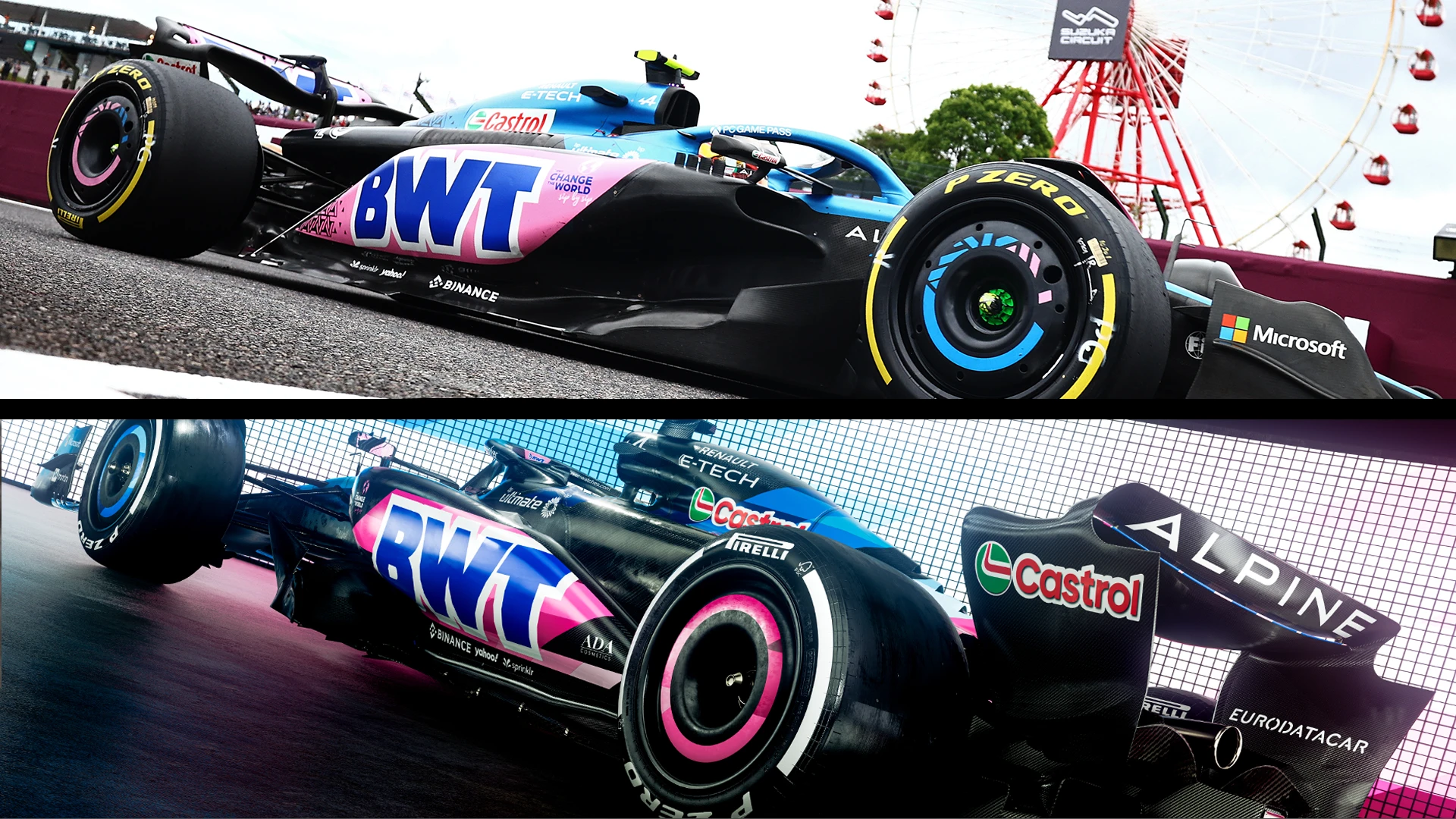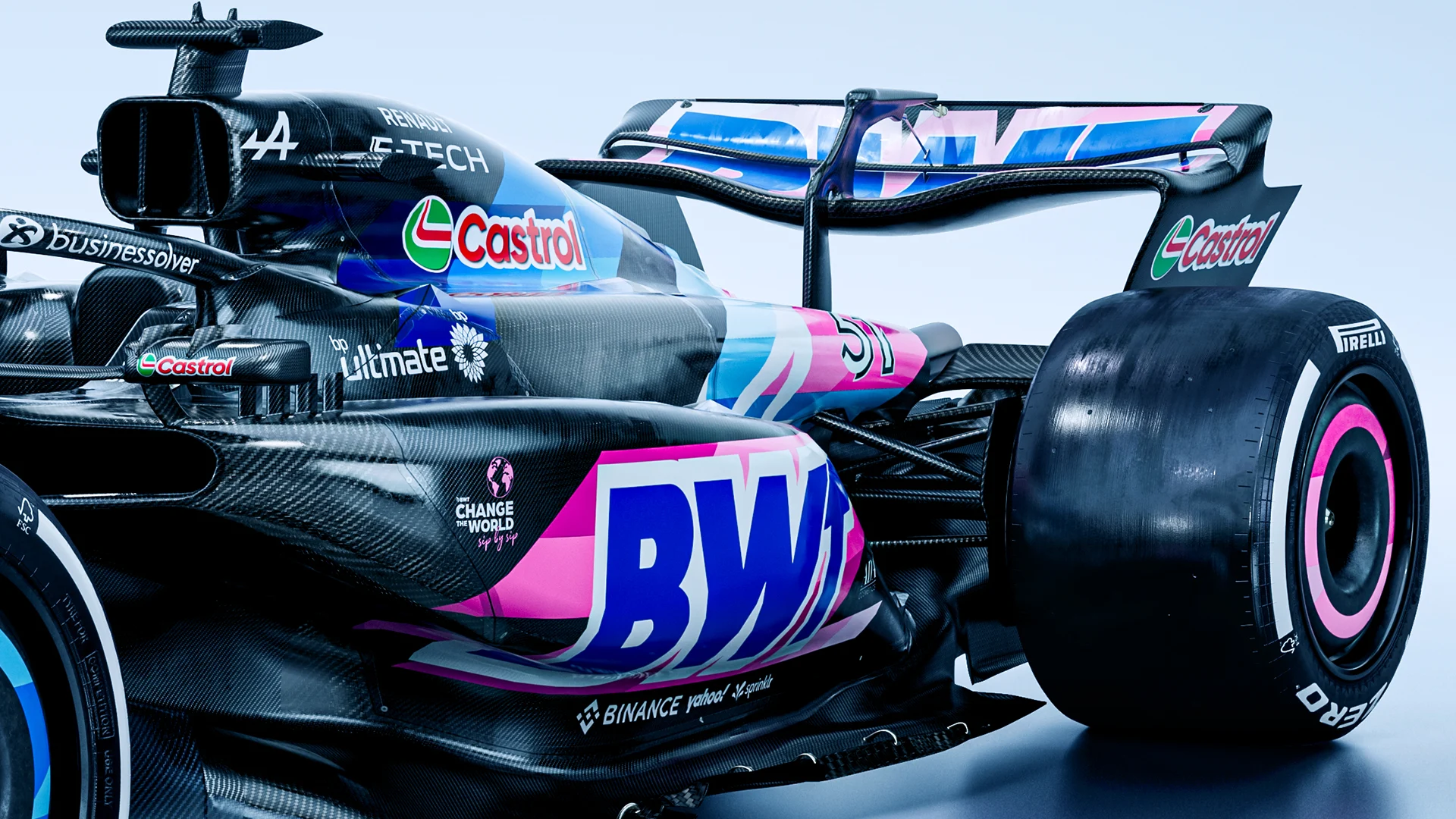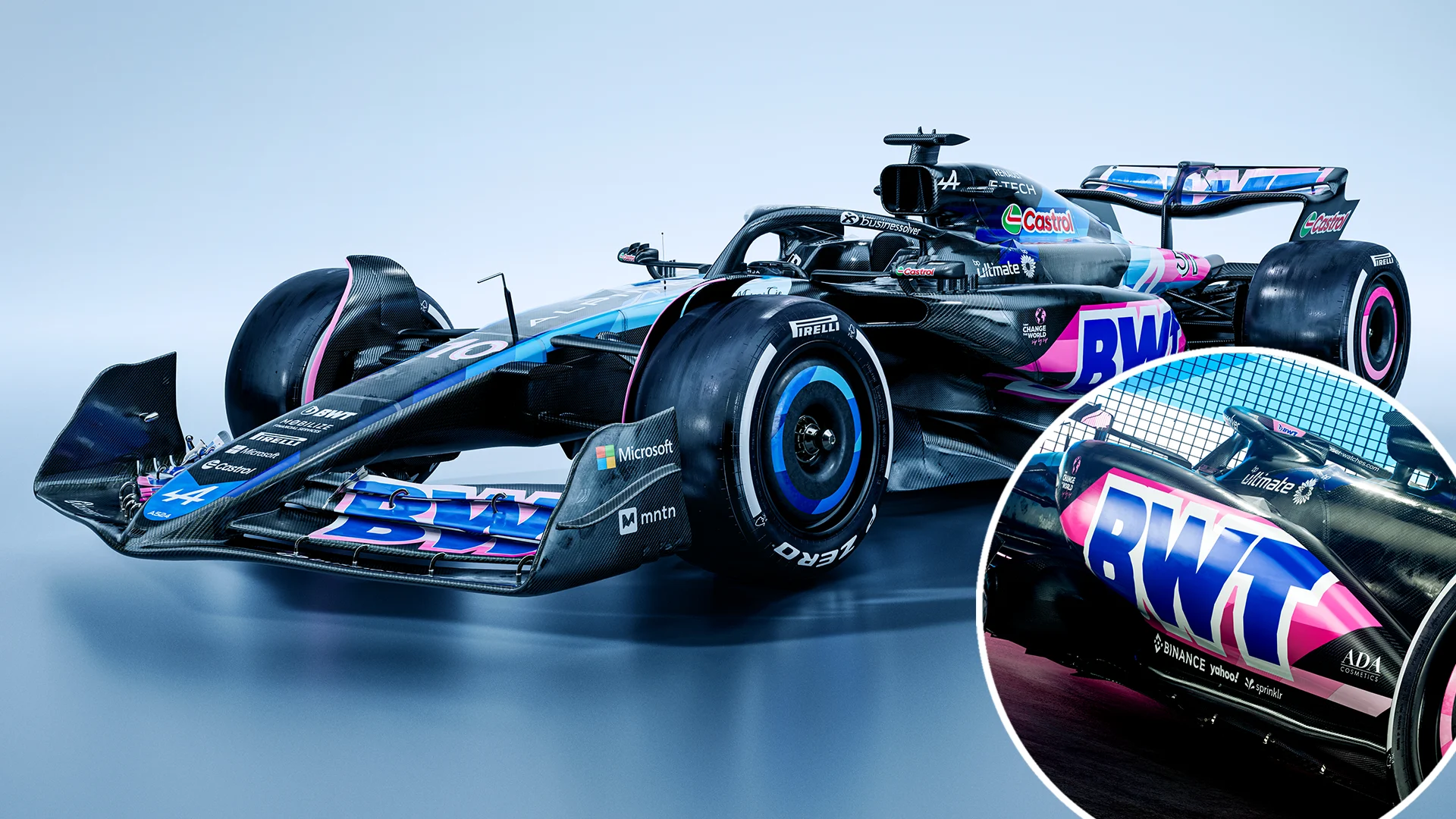While the Alpine A524 looks superficially similar to its predecessor of last year, it represents a nose-to-tail re-engineering job which the team hopes will significantly improve its competitiveness.
The take-away points of visual difference are a re-arranged geometry for the pushrod rear suspension and a reconfigured sidepod-cooling layout which allows a deeper undercut along the length of the sidepod. There has also been a big push to reduce the chassis weight further and to get better thermal management of the brakes in order to optimise tyre performance.
FIRST LOOK: Alpine reveal ‘aggressive’ new A524 car for 2024 season
Although it’s expected that the Renault power unit will still suffer a small power deficit to the others, the team has plans around the duty cycle of the motor which it hopes will keep it in competitive play.
Alpine Technical Director Matt Harman summarised the changes as follows: “We have completely redesigned the chassis, we have a new rear suspension system, optimised the front suspension and integrated a new heat rejection system to give us more capacity to operate more efficiently at each event.
“In addition, we have completed a lot of work on our brake system, in particular on the thermal management of the brakes as there is performance to extract from transmitting heat through the system.

“Of course, the floor is a big performance differentiator on these cars and we have opted [for] an aggressive approach on development in that area to cover a lot of different concepts and really express ourselves. We have also changed the front wing and nose to manage airflow at the front of the car.
“By applying these changes, we are giving ourselves much wider scope to add performance across the next two seasons even if there has been some compromise on reaching certain targets, which we have pushed to the limit.”
GALLERY: Every angle as Alpine show off their latest F1 challenger
The chassis redesign, while encompassing the targeted weight reduction, has allowed for both the new sidepod layout and new rear suspension.
Some of the radiator area has been moved higher up into the car – as evidenced by the slightly enlarged engine cover airbox – but the implication from Harman’s comments about heat rejection is that the radiators themselves are now more efficient.
Capillary radiator technology (using pressure differences to enhance flow) has improved significantly in the last couple of seasons and is the probable source of the improved efficiency.

The sidepods have a deeper undercut at the front. Their central bulk is reduced. This will all enhance the airflow travelling down the sides of the car to the crucial gap between the rear wheels and diffuser. This flow is used to manipulate the pressure behind the diffuser in such a way that the speed of the underfloor airflow is increased, thereby increasing downforce.
At the rear the pushrod has been relocated further forward and with a higher mounting point at the inboard end. This will have increased the pushrod’s leverage on the inboard suspension rockers, potentially making available a longer travel.
This should better resolve the ride height conflicts inherent to this generation of car. The more travel, the less compromise there needs to be to encompass the low ride height as the car is at speed and pressing down hard on its suspension and the higher ride height it assumes at low speeds.
Another aim of the geometry change is to help improve the car’s through-corner balance, making it more consistent through all the different phases of the corner.
Next Up
Related Articles
 F1 CEO Domenicali reflects on 'phenomenal' 2025
F1 CEO Domenicali reflects on 'phenomenal' 2025 PalmerJolyon Palmer picks his top performers in 2025
PalmerJolyon Palmer picks his top performers in 2025.webp) Winners & Losers5 Winners and 5 Losers from the 2025 season
Winners & Losers5 Winners and 5 Losers from the 2025 season ExclusiveVesti on life as Mercedes reserve and his F1 plan
ExclusiveVesti on life as Mercedes reserve and his F1 plan Hinchcliffe'History shows Piastri will be even better in 2026'
Hinchcliffe'History shows Piastri will be even better in 2026' The elite group Norris joins as McLaren World Champion
The elite group Norris joins as McLaren World Champion

